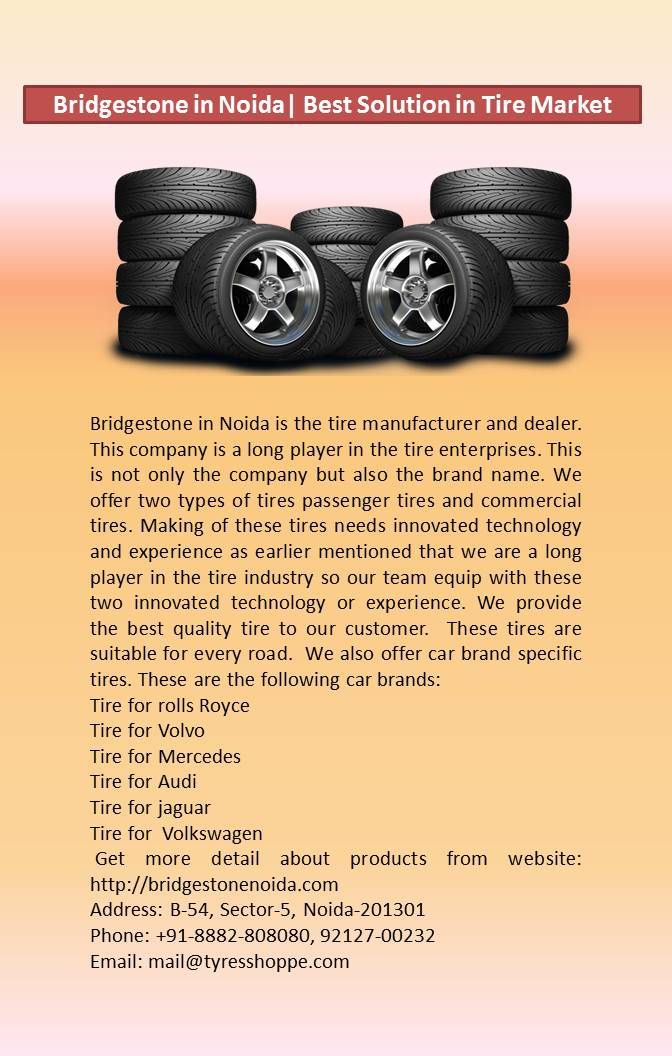At some point, every car requires new tires. Since you want to budget accordingly, it’s important to know how much does it cost to replace your tires?
In this guide, we cover the varying factors that influence the new tire price. We also give you a few tips that may help you save some money.
How Much Do New Tires Cost?A new set of four tires will usually cost you between $400 and $1500, depending on the type of tire, vehicle, quality and where you get them installed. If you choose cheap tires, you may be able to spend $50 each, but on some vehicle types, you can easily spend $1500 or more on a new set of tires.
Now that we have the quick answer to the general cost of new tires, let’s take a closer look at the factors that affect the cost.
Factors Affecting Cost to Replace Your Tires1. Tire SizeThe biggest factor affecting your expense will be the size of the tire you need. You can find tires in all sizes, meant for a multitude of purposes. If you have a compact car, you will have the cheapest tires available, maybe even $50 each.
Of course, high-performance cars, large pickup trucks, specialty off-road vehicles, and SUVs will naturally cost more. A good rule of thumb is that the larger the tire is, the more you can expect to pay for it.
2. BrandThere are just as many tire brands as there are sizes. Many tire shops specialize in one budget brand and carry a multitude of name brands.
You will spend far less to go with the no-name brand, but you need to think about the quality. After all, if you save money today by choosing this brand, does it really pay off if you have to replace the tires again prematurely? You may also get a much longer mileage warranty with quality tires, than with inexpensive tires.
If you choose a premium tire brand such as Michelin, Continental, Goodyear, Bridgestone, you will of course pay much more, but you know that you will get quality tires that last a long time and keep your vehicle on the road.
RELATED: 6 Worst Tire Brands to Avoid Buying
3. Installation CostMost tire shops do not make a lot of money on the tire installation. The job itself doesn’t take long and the price can often be included with the cost of the tires.
On average, you can expect most shops to tack on about $20-$40 per tire for the installation. However, if you visit a warehouse club, that expense could be even less.
4. Tire DisposalYou don’t get to leave your old tires with the shop without paying a price. These shops must pay to have them recycled, so that cost gets passed down to you.
On average, the tire disposal fees will be between $2 and $10 per tire to dispose of them. If you would rather save this money, you can get rid of them yourself.
5. Road Hazard/Warranty ProtectionOn top of the regular price paid for your tires, you may choose to add some extra warranty protection. With road hazard protection, you are covered if your tires get a hole or blow out.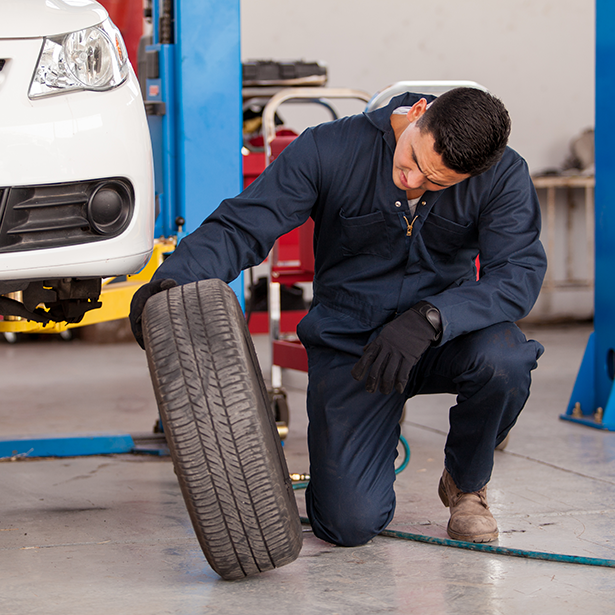
However, you must be careful who you choose to get road hazard through. Not all companies are going to follow through on the agreement, leaving you paying for protection that doesn’t matter when something actually goes wrong.
6. Wheel AlignmentWhen your new tires are installed, you will need to get a wheel alignment. Having properly aligned tires ensures that they last as long as possible.
You might pay between $75 and $200 to have the wheels aligned, depending on how many need to be done. However, this money can be seen as an investment, ensuring that your tires continue to provide reliable transportation.
How to Save Money on Tires1. Shop AroundThe most important factor is shopping around. You can call one location and get a price on a particular set of tires and the cost is completely different somewhere else, even though they are the same tires.
When you are shopping around, keep a couple of costs in mind. You will have the cost of the tires, the cost of installation and any fees that the company charges. Ask for the “out the door” price, so you can compare it apples-to-apples.
You will have the cost of the tires, the cost of installation and any fees that the company charges. Ask for the “out the door” price, so you can compare it apples-to-apples.
RELATED: How Much Do Rims Cost?
2. Watch for SalesYou can get a great deal if you shop during a sale. Of course, it’s not always convenient to wait for the next sale, but if you have some time before the tires need to be changed, this is a great way to save.
Throughout the year, tire shops will offer various sales. You can take advantage of a Buy 3, Get 1 Free deal or enjoy a certain percentage off. Most tire sales correspond with holidays, so you can tell when one might be around the corner.
3. Take Advantage of RebatesTire shops don’t often make a whole lot on the tire, so discounts can be limited. However, the manufacturers are happy to offer rebates throughout the year.
Most of the rebates are through the mail but can be found online. Additionally, the tire shops have the inside scoop on what’s available, so be sure to ask.
Additionally, the tire shops have the inside scoop on what’s available, so be sure to ask.
It’s not always wise to purchase used tires, but the takeoff is something entirely different. These tires were installed brand-new and only used for a couple of days before the customer decided they didn’t want them.
It could be that the client didn’t appreciate the ride or simply decided they wanted something better. Either way, the tire shop will offer the replacement tires at a discounted price, so be sure to ask what’s available, especially if you use a popular tire size.
5. Use All-Season TiresIf you live in a cold climate where a lot of snow falls, you might have two sets of tires. Most people in these regions use summer and winter tires. With two sets of tires, you have a lot more money out, especially every time you need to have them switched.
If you aren’t actually driving in the snow, it might be better to use all-season tires throughout the year.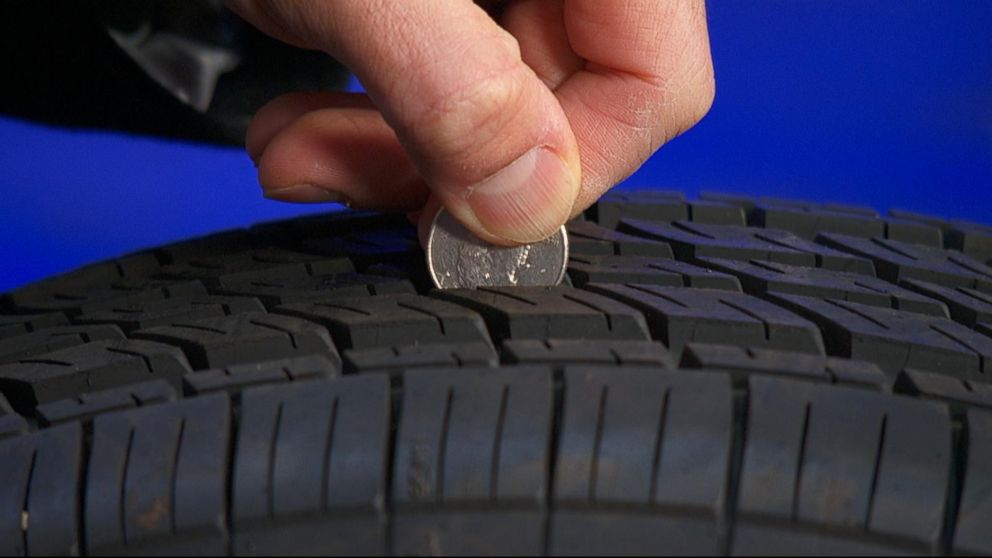 While these aren’t going to get you through deep snow, there’s no sense spending more for something you don’t need. Evaluate your options and see if you can stick to using one set all year long.
While these aren’t going to get you through deep snow, there’s no sense spending more for something you don’t need. Evaluate your options and see if you can stick to using one set all year long.
RELATED: 10 Best All-Season Tires – Review & Buyer’s Guide
The lifespan of a tire will depend on the type of tire, the type of driving you do, and the climate. Generally, tires last between 50,000 and 80,000 miles and 6 years. If you drive a lot in city traffic and brake a lot or live in a hot climate, your tires may wear out sooner. If you often drive around with low tire pressure or a bad wheel alignment, they may also wear down sooner.
If your tire tread depth is close to 2/32” or under, it’s definitely time to replace them. Most tire manufacturers recommend replacing tires every 6 years, regardless of the number of miles driven. This is because tire rubber degrades over time, even if the tires are not used.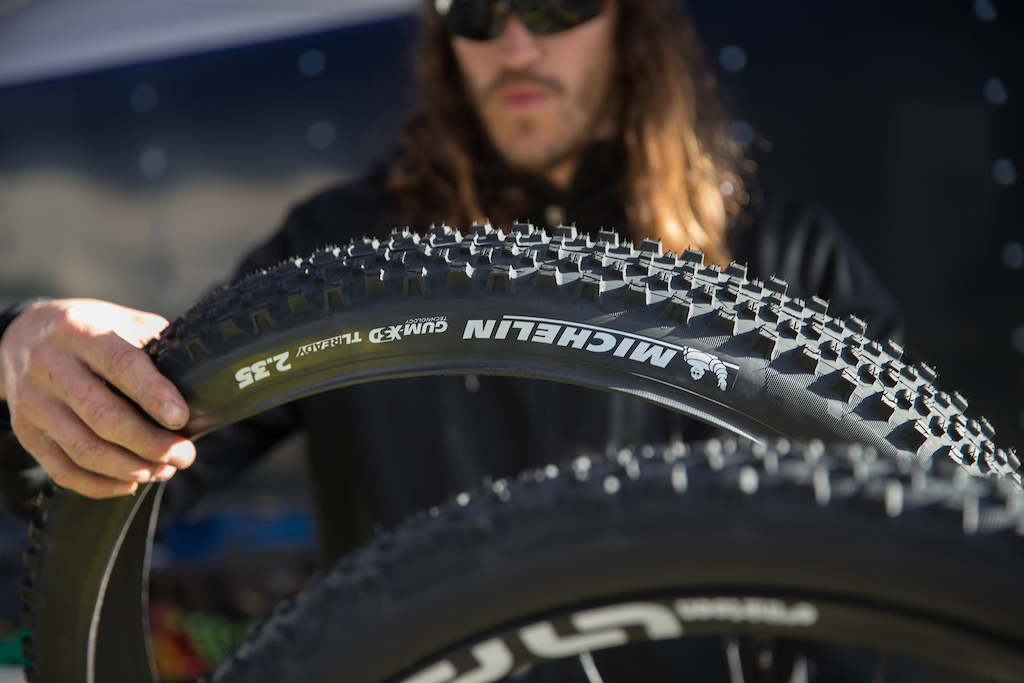 Tires that are more than 6 years old should be inspected by a professional to determine if they are safe to use.
Tires that are more than 6 years old should be inspected by a professional to determine if they are safe to use.
If your car is two-wheel-drive, it’s fine to replace two tires on the same axle instead of four, although you need to consider that your car will handle differently with two new tires than with four. If you are replacing two tires, it is best to put the new or best tires on the rear axle, as this will improve traction and stability.
On many 4WD and AWD cars, however, the diameter of the tires must match, otherwise, you can damage the transmission or the differential. Therefore, it is recommended to replace all four tires on 4WD cars, and it’s a requirement for many car brands like BMW and Audi.
You need to read the tire dimensions on your old tires and take them to the tire shop. You can also call your authorized dealer or check your owner’s manual if the wheels are stock.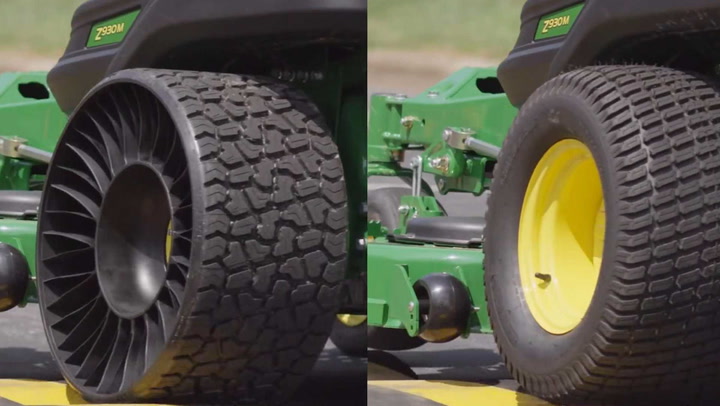
Was this article helpful?
YesNo
Your browser's Javascript functionality is turned off. Please turn it on so that you can experience the full capabilities of this site.
One of the most asked questions at Les Schwab is about the price of new tires. People want to know what a set of four tires will cost them. The price of a new set of tires depends on the type of vehicle you drive, how much comfort you want, ride quality, noise level, tread durability, and traction features, which can include seasonal tires and tires for specific terrain. Here’s how to understand the cost of your next set of new tires and why the Les Schwab Best Tire Value Promise saves you money with free peace of mind tire protection and a warranty that won’t cost you extra.
Price is a big factor for any purchase. While some online retailers might have the tires you want at a price you like, you run the risk of getting the wrong type of tires for your vehicle and driving needs. Plus, you'll need to find someone to mount them to your wheels, balance them, install them on your vehicle, and dispose of your old tires. This takes more of your time and adds to the overall cost of getting new tires. Then there are tire manufacturer warranties or other premium services to consider.
Plus, you'll need to find someone to mount them to your wheels, balance them, install them on your vehicle, and dispose of your old tires. This takes more of your time and adds to the overall cost of getting new tires. Then there are tire manufacturer warranties or other premium services to consider.
When you purchase passenger or light truck tires at Les Schwab, we mount them for free, rotate those tires for free, re-balance them for free, offer free flat repair and air-pressure checks, as well as give you a free best-in-the-industry warranty that even includes road hazard protection at no extra charge. More on that warranty in a bit.
On new tires, the price can range greatly. Tire size, which is directly tied to the vehicle you drive, affects the price. You’ll typically need a larger tire for a pickup than you would for a car. Tires are also priced based on the amount of rubber used to manufacture them as well as the manufacturing technology and features. For example, an electric vehicle (EV) will require performance tires with a higher speed rating and load capacity, which can cost more than a set of standard all-season tires.
For example, an electric vehicle (EV) will require performance tires with a higher speed rating and load capacity, which can cost more than a set of standard all-season tires.
As with any purchase with varying levels of price and performance, there are trade-offs to consider. These can include comfort, control and traction, tire life, durability, fuel economy and the cost of a set of tires. You might even consider replacing just two instead of all four tires to save money. However, doing so can impact vehicle safety, performance, and longevity. See our article on replacing all four tires on an AWD vehicle.
If you’re looking for maximum fuel efficiency, we can help with our article on how to choose car tires.
Looking for snow tires? Depending on what you drive, maneuverability in the snow can add to the price of tires. That’s because today’s snow tires are highly engineered and packed with technological breakthroughs designed to keep you and your family safe on the road, whether that’s bare pavement on a well-maintained interstate or a snow-covered, winding motorway through the mountains.
Check out our guide to buying tires for help pinpointing the type and size of tire you need. These can include all-season tires, all-weather tires, winter/snow tires, mud terrain, as well as all-terrain tires, performance tires, highway tires, traction tires, and specialty tires.
Another factor to consider when evaluating the price of a new set of tires is the warranty and other after-purchase services. The tread life on a set of tires can range up to 80,000 miles and beyond. Some places might charge extra for the warranty, but at Les Schwab, that’s part of our Best Tire Value Promise.
Our freebies include a world-class warranty, free lifetime tire and mileage care, and free peace of mind tire protection, including flat repair, rotations, rebalancing, replacement, safety checks, brake inspections, and visual alignment checks at any Les Schwab location. From Colorado and Wyoming to the West Coast, you’re never far from one of our stores – or the road services we deliver.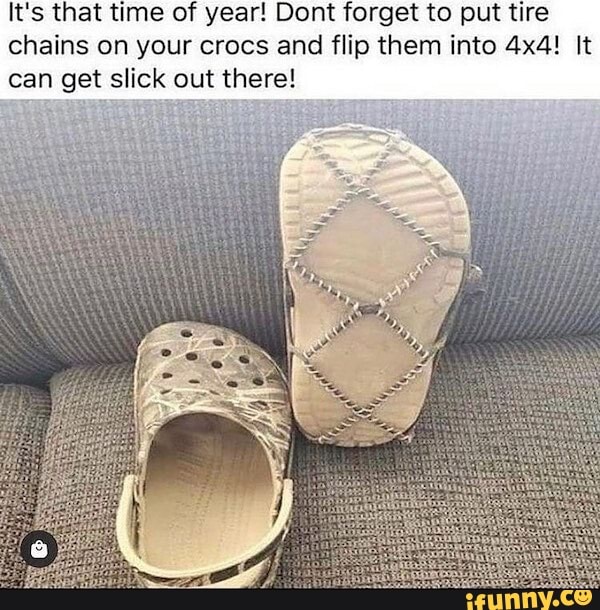 We even offer free tire disposal when you replace your old tires at Les Schwab.
We even offer free tire disposal when you replace your old tires at Les Schwab.
Many of today’s new vehicles come with run-flat tires. Most of the time, these cars don’t have a spare, making run-flat tires the important difference between being stranded on the side of the road or being able to get to a repair shop. However, they can be more expensive than standard tires.
When you’re ready to shop new tires, our pros are here to help. Stop by your local Les Schwab and we’ll take a look at your current tires, make recommendations for your next set, and show you all the options that best fit your driving needs.
Learn More About Tires
Tires are not the first freshness. As absurd as it may sound, the question of the release date of tires worries some buyers. In garages and tire shops, they answer the question in completely different ways - does the year of rubber production affect the quality of the tire? To be honest, probably not.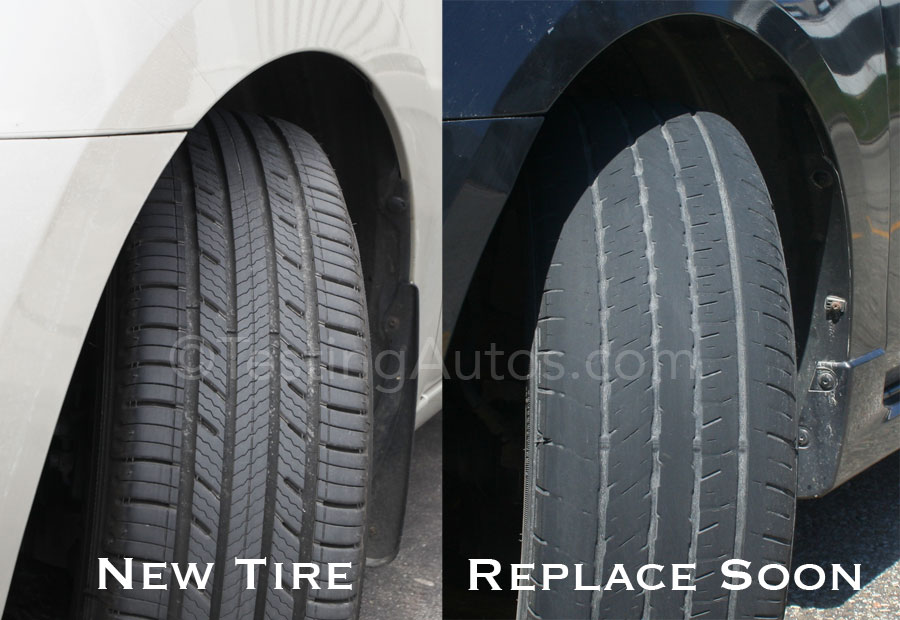 Let's figure it out.
Let's figure it out.
How to determine the year of manufacture of rubber? The manufacturer indicates the week and year of manufacture on the tire on the inner circle near the bead ring. 4 numbers in an oval - what we are looking for. For example, 4317 means that the tires left the assembly line in week 43 of 2017. It turns out, around October. In accordance with standards and common sense, you can absolutely safely buy new tires that were released 3-4 years ago. The manufacturer sets a warranty period. Usually it is 5 years. The service life can be much longer.
Yes, many tire manufacturers have tested new tires on par with 3 year olds at their test centers. Michelin's 2018 study received the biggest response. Rubber was tested in Asia, Europe and proved that new and three-year tires are one and the same. The result of the experiment was the advertising campaign “Tyres are not bananas” and the conclusions: three-year-old tires from the warehouse are no different from new ones, and the real life of high-quality tires is up to 10 years from the date of production.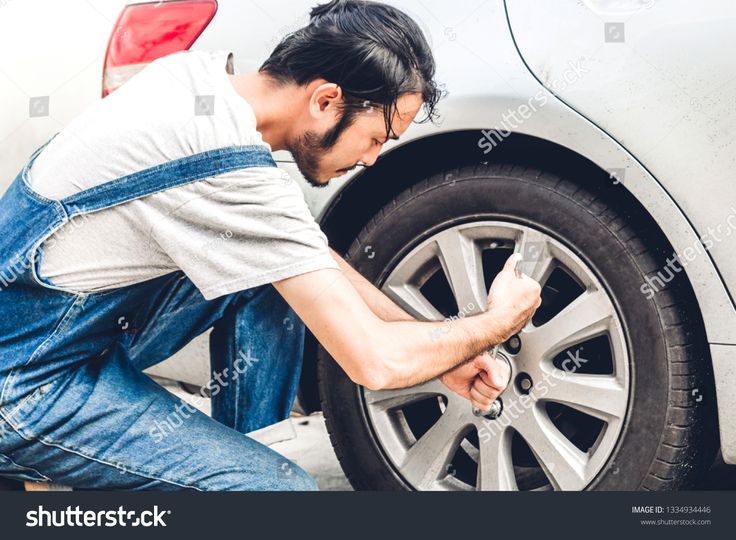
Right. And in their research, Michelin experts spoke only about their tires, subject to strict adherence to the rules for long-term storage. In our country, everyone is guided by the norms and recommendations of GOST. It regulates the period during which the manifestation of defects is excluded - 5 years. During this period, they are considered new and are subject to sale in the usual manner.
A visual inspection is sufficient for this. For example, you decide to buy tires in Yekaterinburg or Nizhny Tagil. And you are offered four-year tires, explaining this by the total supply of such a batch to the Urals. Examine each carefully. The main beacons are surface integrity and color.
1. Exclude the presence of microcracks, even single ones - this is an indicator that the rubber has begun to dry for some reason.
2. The color of the tires should be a rich black, without whitish streaks and faded areas.
3. If you really want to, you can try on the wheel at the tire shop at the store. Rubber should remain intact, not give microcracks and require standard balancing.
In 99 cases out of 100, this will be the case. A quality tire may not show signs of aging after 5 years of proper storage. This is only possible with manufacturing defects.
No one has done exact research, but marketing is most likely to blame. In order to stimulate sales of new tires, it is logical to convince the client that it is dangerous to ride on old ones.
Yes. The warranty period of 5 years is the period in which the manufacturer assumes responsibility for possible defects. Moreover, it is calculated with a margin - with the expectation of active operation in a constant mode in difficult road conditions. The actual service life is much higher. We are also given a 3-month warranty for shoes, but we wear high-quality models for several seasons and do not know anything about the release date.
The actual service life is much higher. We are also given a 3-month warranty for shoes, but we wear high-quality models for several seasons and do not know anything about the release date.
If you remember about the Urals again, then you will also use tires in the summer-winter shift mode, that is, with breaks. Our catalog contains all the leaders of the tire market. Therefore, you can buy rubber in Yekaterinburg and other large cities of the Ural Federal District directly from the manufacturer and be sure of its quality.
Hello, today we will understand this question - which axle to put new tires on if you change only a pair? Read the article to the end, you will find a lot of information.
Every car owner is familiar with the phenomenon of tire wear. And there are many reasons for this. This is a natural process during long-term operation of the car. That is, tires wear out and become unusable after a certain time.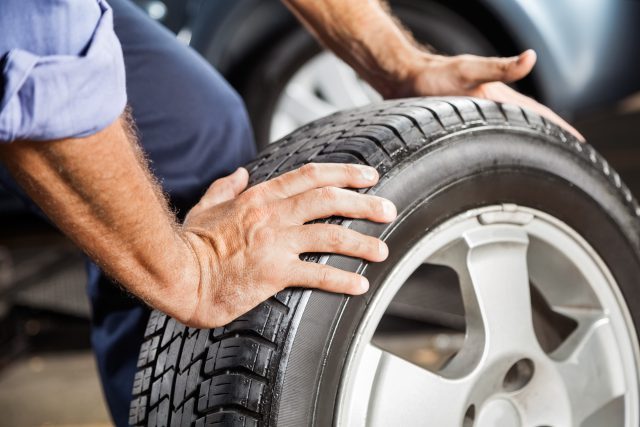 And that's okay. But, in addition, a number of other factors affect the degree and rate of wear. Today we will find out:
And that's okay. But, in addition, a number of other factors affect the degree and rate of wear. Today we will find out:
Select tires by vehicle or by specifying size
Tire wear is influenced by driving style, road quality, tire pressure, car load, road surface temperature, and, of course, the technical condition of the car. It has been proven that driving a car in hot weather on a dry road at high speed will wear the tread faster than driving at a moderate speed in cool weather.
Also with pressure. We recommend that you go to a service station and correct it according to the recommendations of the car manufacturer, especially if you are going on a long journey in a well-loaded car. So that your trip is comfortable and safe.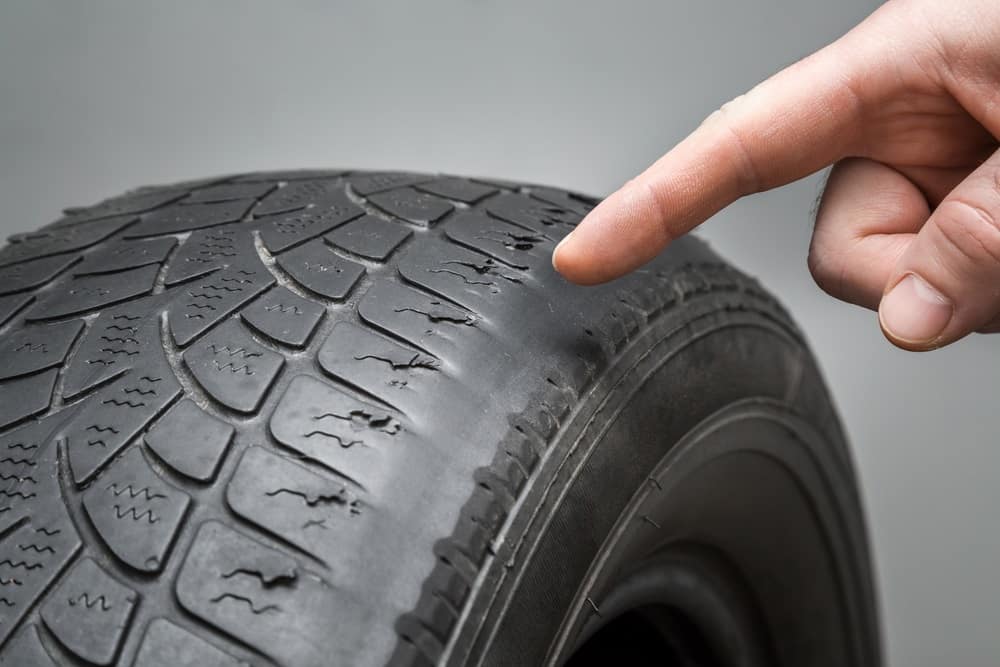
Select tires by vehicle or by specifying size
Also, the nature of tire wear is affected by the type of drive your car has - front, rear or full. It is even intuitively clear that the wheels on the drive axle wear out faster. And since the load on the 4 wheels of the car is uneven, their wear is also uneven. On steered wheels, the sidewall wears out more, as it is under load when cornering. While the central part of the tread “suffers” on the driving wheels. Since it is she who contacts the asphalt and transmits the rotation of the wheel to the road. But, for example, in a car with front-wheel drive, the front wheels are both driven and steered - so they will wear out faster than the rear ones. In a rear-wheel drive car, the rear wheels are the first to wear out. But in a car with all-wheel drive, the nature of tire wear depends on the type of transmission and the types of all-wheel drive connection. And also from the distribution of torque - more on the front or rear axle.
Friends, I want to remind you that the law prohibits the operation of cars and light trucks with a tread depth of less than 1.6 mm on summer tires and 4 mm on winter tires. Be sure to control this moment - after all, this is primarily your safety on the road, as well as other road users.
If you follow the recommendations that will help extend the "life" of the rubber, you can achieve a longer life. In general, the condition of tires is one of the main factors that affects your safety on the road.
Main recommendations:
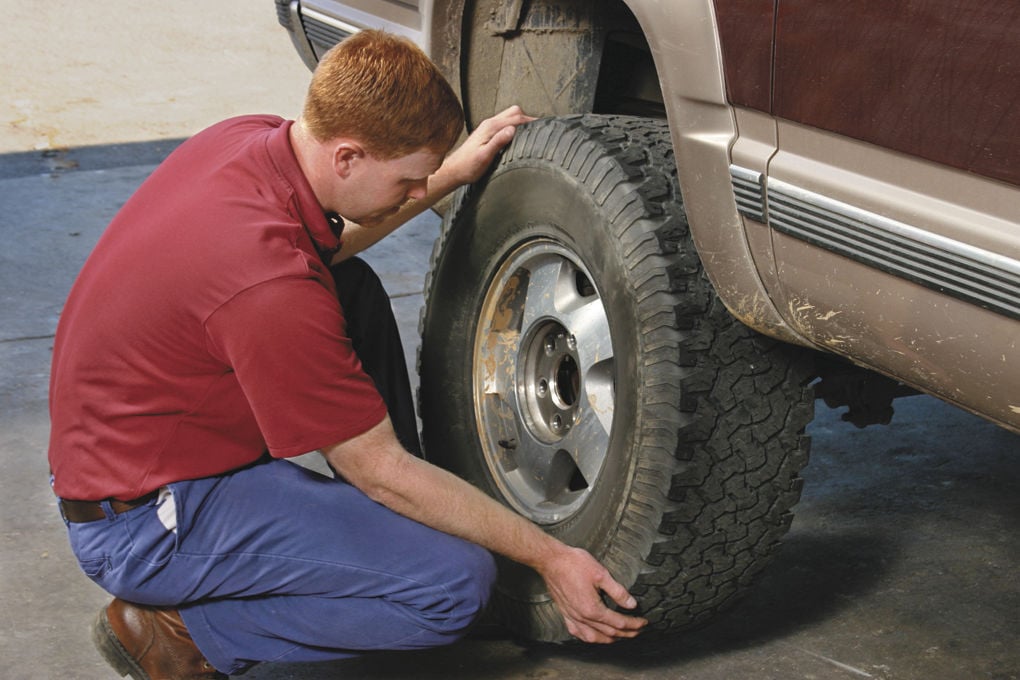
Well, let's talk separately about such a method of extending the life of tires as tire rotation. This is a rearrangement of the wheels in places, due to which the rubber wears out more evenly. After all, it is very important that all 4 tires wear equally, because then you will be able to control your car better (reaction in corners, traction, braking performance, reduce noise, etc.). This is very important, especially in difficult weather conditions, such as autumn or winter. This is first. And secondly, the same tire wear allows in the future (if necessary) to replace the entire set of rubber, and not in pairs. Although we will talk about this a little later. Find out which axle to put new tires on.
Select tires by vehicle or by specifying size
So, tire manufacturers recommend swapping wheels every 5-8 thousand car mileage. But, we must not forget that the difference in tire wear should not be too large. And you can only swap wheels with the same tread pattern. So what are the rules for changing tires? I recommend using the generally accepted rules from tire manufacturers. For example, the well-known Michelin recommends doing this like this:
But, we must not forget that the difference in tire wear should not be too large. And you can only swap wheels with the same tread pattern. So what are the rules for changing tires? I recommend using the generally accepted rules from tire manufacturers. For example, the well-known Michelin recommends doing this like this:
As you can see, tire rotation depends on the type of vehicle drive and the type of tires used. Let's look at several ways:
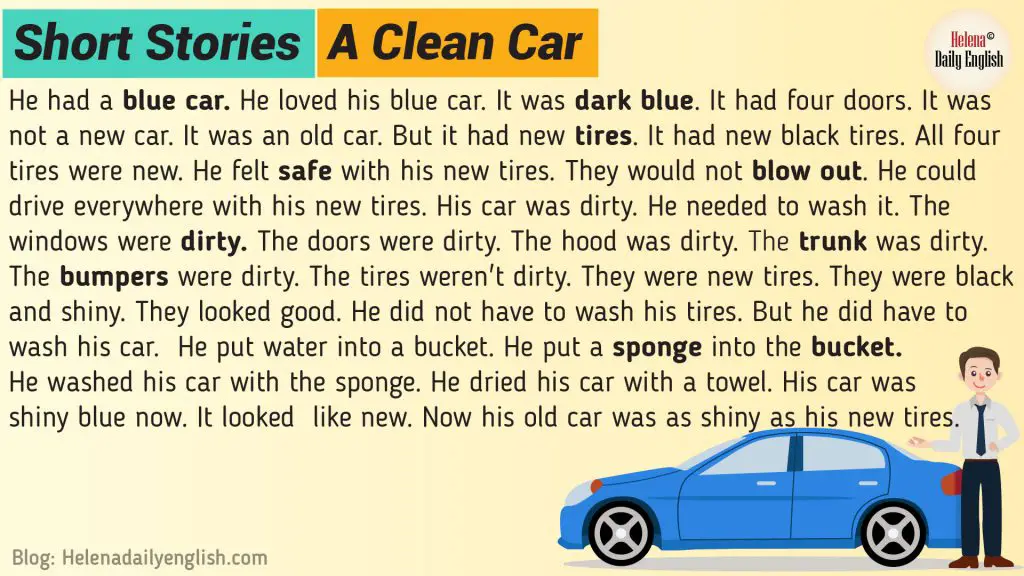 The rear wheels are placed forward. And the front back diagonally. Left front in place of the right rear, and right front in place of the left rear.
The rear wheels are placed forward. And the front back diagonally. Left front in place of the right rear, and right front in place of the left rear. If you have tires with a directional tread pattern, the only way to rotate is to swap front and rear tires.
Friends, I want to say right away that AUTOMARKET recommends having two complete sets of tires - winter and summer - and changing them 4 pieces at a time. And you will be happy.
But if life has already forced, and in order to save money, the car owner buys only one pair of new tires, then the question arises - where to put them? To the front axle or to the rear? An interesting question, and in some autoforums there are whole discussions about this. Someone says - depending on the type of drive, someone will say - of course, on the front axle, because the front wheels wear out faster. And there are those who believe that the rear and the type of drive have nothing to do with it. The correct answer is the third one. A new pair of tires is ALWAYS put on the rear axle. Although earlier there was an opinion that on a front-wheel drive car, new tires are placed on the front axle, since the braking distance is shorter and the car will row better. And it seems to be logical. But it's not.
The correct answer is the third one. A new pair of tires is ALWAYS put on the rear axle. Although earlier there was an opinion that on a front-wheel drive car, new tires are placed on the front axle, since the braking distance is shorter and the car will row better. And it seems to be logical. But it's not.
Even Michelin made a statement on its website a long time ago that for safety reasons, regardless of the drive, new or less worn tires should be put on the rear axle.
According to Michelin experts, this provides a higher level of safety in unexpected or difficult traffic situations (emergency braking, sharp turns), especially on slippery surfaces. Yes, and numerous tests prove that in any situation it is always easier to control the front wheels than the rear. After all, the rear axle on worn tires goes out of control instantly, especially in the rain or just on wet cold asphalt. The electronics of the car will not always be able to stabilize it - it may simply not be physically enough for the area of \u200b\u200bcontact between the tire and the road. As a result, the driver loses control of the car due to the “back end” skidding, which many drivers simply cannot cope with. The German ADAC club is of the same opinion on installing the best pair of tires - if tires of different quality are installed on different axles, put the best tires back.
As a result, the driver loses control of the car due to the “back end” skidding, which many drivers simply cannot cope with. The German ADAC club is of the same opinion on installing the best pair of tires - if tires of different quality are installed on different axles, put the best tires back.
The Austrian Automobile Club ÖAMTC tested back in 2010 how the best tires on the front or rear axle affect the driving performance of the car. They also recommend putting the best tires on the rear axle. The test proved that the car shows more effective braking when newer tires are installed on the front axle. But when you install these tires back - the car shows better directional stability, especially on a wet roadway. And yet, ÖAMTC experts unanimously repeat that it is possible to install different tires only if the difference in wear is small. They ran this test on tires with a wear difference of 1.5mm between front and rear. And if the difference is greater, it is recommended to buy a new set of 4 tires.
Also in 2017, the Belarusian portal AUTO TUT.BY conducted a test at a training ground in Finland. Two identical VW Golfs were tested, one had fresher tires in the back, the other in the front. The cars accelerated to 30 km / h and slowed down, first on ice, and then on snow. In short, the results of the test are as follows: a car with good tires in the front accelerates and brakes faster than in the opposite case. But that's probably the only bonus. In characteristics such as grip, handling, cornering stability, the car is more predictable and safer if the best tires are installed on the rear axle.
Conclusion: Tires with varying degrees of wear are definitely dangerous. The question is - how dangerous can it be? When the tires are “not very” installed in the front, the braking distance is longer of course, but the car itself is more predictable. It is easier for you to control it, you can ride smoother or quieter, etc. Yes, and keeping a safe distance is easier than driving a car that has gone into a skid.
